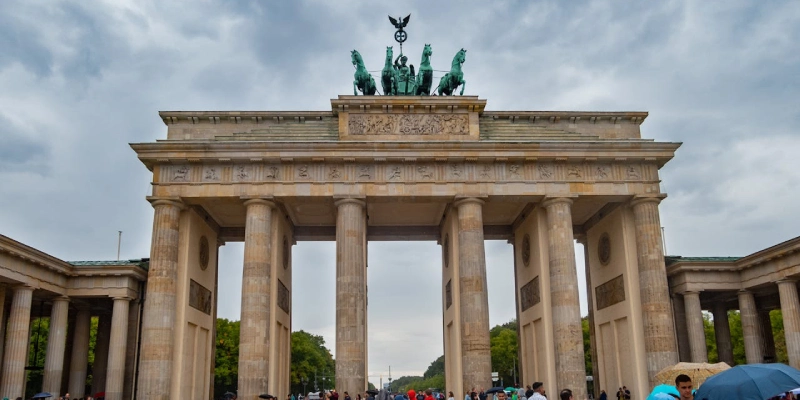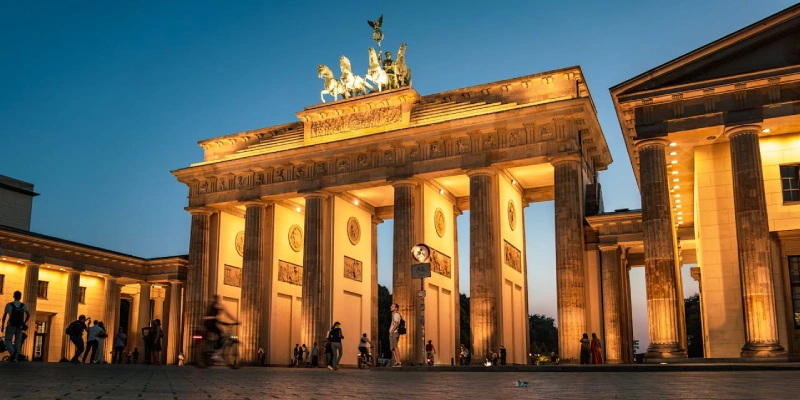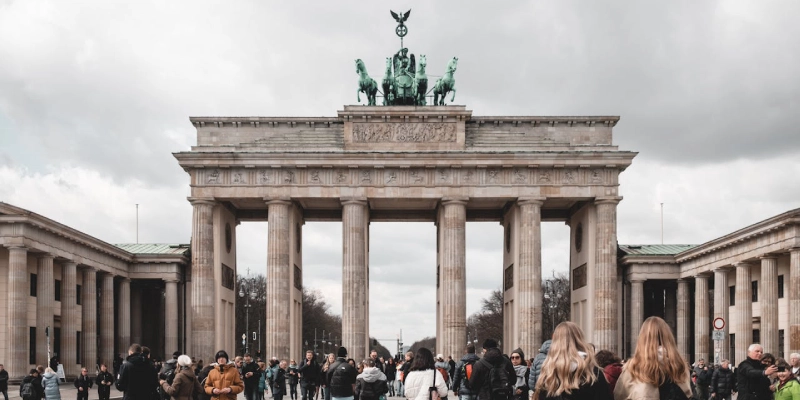The Brandenburg Gate: A Symbol of German Unity and History
The Brandenburg Gate, an iconic symbol of Berlin and Germany, is a historic monument that stands as a testament to the nation's turbulent past and its eventual reunification. Located in the heart of Berlin, this neoclassical masterpiece attracts millions of visitors annually. Known for its architectural grandeur, rich history, and significance as a symbol of peace and unity, the Brandenburg Gate is a must-see landmark for anyone exploring Berlin.
Commissioned by King Frederick William II of Prussia, the Brandenburg Gate was designed by Carl Gotthard Langhans and completed in 1791. It was intended as a symbol of peace and triumph, marking the end of the boulevard Unter den Linden and the beginning of the road to Brandenburg an der Havel. The gate’s design was inspired by the Propylaea in Athens, reflecting the neoclassical architectural style.
The Brandenburg Gate is constructed of sandstone and features twelve Doric columns, six on each side, forming five passageways. The central passageway was originally reserved for the royal family. Atop the gate stands the Quadriga, a chariot drawn by four horses, driven by Victoria, the Roman goddess of victory. Throughout history, the gate has witnessed numerous pivotal moments. It served as a military symbol during the Napoleonic Wars, was heavily damaged during World War II, and became a symbol of the Cold War division when the Berlin Wall was erected. After the fall of the Berlin Wall in 1989, the Brandenburg Gate became a symbol of German reunification and peace.
Commissioned by King Frederick William II of Prussia, the Brandenburg Gate was designed by Carl Gotthard Langhans and completed in 1791. It was intended as a symbol of peace and triumph, marking the end of the boulevard Unter den Linden and the beginning of the road to Brandenburg an der Havel. The gate’s design was inspired by the Propylaea in Athens, reflecting the neoclassical architectural style.
The Brandenburg Gate is constructed of sandstone and features twelve Doric columns, six on each side, forming five passageways. The central passageway was originally reserved for the royal family. Atop the gate stands the Quadriga, a chariot drawn by four horses, driven by Victoria, the Roman goddess of victory.
Throughout history, the gate has witnessed numerous pivotal moments. It served as a military symbol during the Napoleonic Wars, was heavily damaged during World War II, and became a symbol of the Cold War division when the Berlin Wall was erected. After the fall of the Berlin Wall in 1989, the Brandenburg Gate became a symbol of German reunification and peace.
- Doric Columns: The twelve columns provide a majestic and symmetrical facade.
- Quadriga: The chariot sculpture atop the gate, symbolizing victory and peace.
- Sandstone Construction: The durable material has withstood centuries of history.
- Passageways: The five passageways, with the central one historically reserved for royalty.
- Walking through the gate to experience its historical significance.
- Photography sessions to capture the gate’s architectural beauty.
- Attending cultural events and festivals held at the gate.
- Exploring nearby attractions like the Reichstag Building and the Memorial to the Murdered Jews of Europe.
- The Quadriga was once taken to Paris by Napoleon as a symbol of victory.
- The gate was heavily damaged during World War II and later restored.
- During the Cold War, the gate was inaccessible, standing in the no-man's land of the Berlin Wall.
- The gate has been the site of numerous historical speeches and celebrations.
- It is featured on German euro coins, symbolizing national unity.



